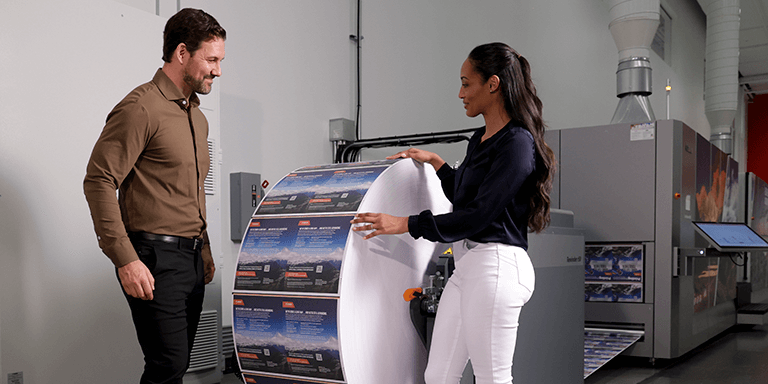RESOURCES
BLOG
Join in the community forum! The thINK blog is a place for community members to share their opinions, best practices, successes, and challenges. Add your comments to the blogs published here or write a blog and we’ll post it for you.

The Next Chapter in Book Printing: How Inkjet Is Reshaping the Industry
As the book publishing landscape continues to evolve, print remains vital—especially when powered by digital printing. According to NAPCO Research’s latest report, Book Printing Trends: The Next Chapter, production inkjet technology is driving a quiet revolution in how books are printed, distributed, and personalized across the supply chain.
From Offset to Agile Inkjet
Traditionally defined by high-volume offset printing, book manufacturing is now prioritizing flexibility, shorter runs, and sustainability. Production inkjet is central to this shift. The report cites IT Strategies data showing that 25% of book pages were printed using inkjet in 2022—a figure projected to grow to 39% by 2028. Inkjet’s scalability and ability to print in smaller batches without sacrificing quality make it an ideal solution for today’s publishing demands.
With features like faster speeds, high-resolution output, and compatibility with standard substrates, inkjet presses—both webfed and sheetfed inkjet—offer a production model that supports versioning, personalization, and even interactive features like QR codes and AR tags. Printers can update reprints on the fly, localize content by region or language, and reduce excess inventory and waste.
A Changing Market, Powered by Data
Modern book publishing is increasingly data-driven. Publishers are using analytics to guide decisions around inventory, reprints, and title testing. Inkjet complements this shift by enabling real-time responsiveness through digital job submission, automated versioning, and fast changeovers. This makes it possible to align production with actual demand — reducing overproduction and improving margins.
Amazon, for example, now prints a significant portion of its book inventory near the point of delivery using inkjet presses, either in-house or through third-party partners. This distributed model reduces shipping costs and shortens lead times, creating a more agile supply chain.
Nearshoring and Sustainability Go Hand-in-Hand
The report also notes a growing trend toward nearshoring. As supply chain disruptions, freight costs, and geopolitical risks increase, publishers are bringing production closer to their markets. Inkjet technology — compact, low-maintenance, and efficient — is making this shift more feasible than ever.
Sustainability, too, is no longer a buzzword — it’s a strategic priority. Inkjet’s support for short runs, water-based inks, and compatibility with recycled stocks helps reduce the environmental footprint of book production. Publishers are taking notice, and printers that can document eco-friendly practices are gaining competitive ground.
Inkjet Across Every Segment
The versatility of production inkjet spans every publishing segment. Trade publishers use it for short runs and regional editions; educational publishers rely on it for fast curriculum updates; academic and nonprofit presses benefit from precise, low-volume runs; and self-publishers use it for high-quality one-off books. In children’s books, inkjet now delivers vibrant color on coated stocks, while workbooks and training materials benefit from its variable data capabilities.
Final Word
Inkjet is no longer a niche solution — it’s a strategic enabler. It gives publishers and printers the tools they need to adapt to changing market demands with speed, efficiency, and sustainability. As the print industry continues to evolve, those embracing inkjet technology are already leading the next chapter in book publishing.
